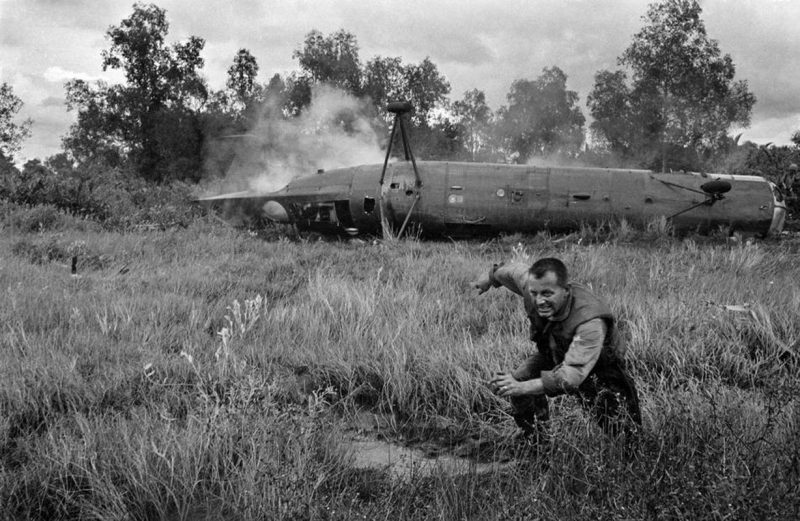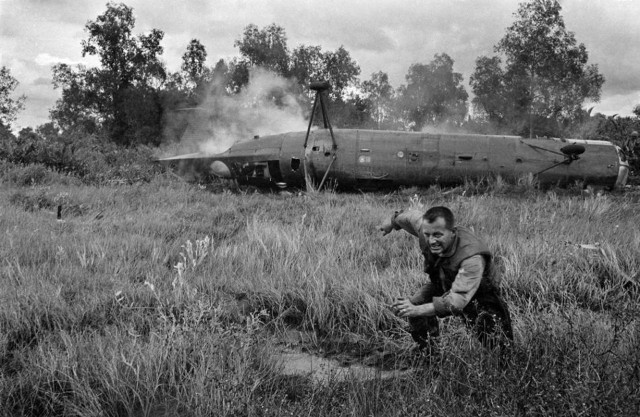Master Sergeant Raul “Roy” Perez Benavidez was shot several times, suffered two grenade blasts, and got bayonetted while saving the lives of eight men. Despite this, it took him over a decade to get a Medal of Honor – and all because of bureaucratic red tape.
Born to a Mexican-American and a Yaqui Indian, orphaned at a young age, and having to drop out of school at 15 so he could work to eat, Benavidez didn’t exactly have a charmed life. So in 1952, he enlisted with the Texas National Guard at the age of 17. By 1965, Benavidez was an advisor to an infantry regiment of the Army of the Republic of Vietnam (ARVN), which was how he stepped on a landmine.
They sent him back to the US, but the diagnosis wasn’t correct. Doctors at Fort Sam Houston swore he’d never walk again, so they prepared to discharge him from the military. But how was a crippled minority, who was also a high-school dropout, going to support himself and his wife?
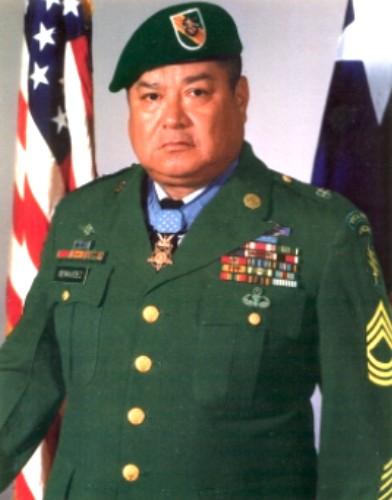
So Benavidez did the only thing he could. At night, when the doctors and nurses left, he tried to wiggle his toes till he felt them again. Then he would use his elbows and chin to crawl toward the wall next to his bed. Then he’d try to get off the bed by himself.
In July 1966, the man whom the medical experts said couldn’t possibly walk again did just that. Though his wounds still hurt, he was back in South Vietnam by January 1968… only to nearly die again some four months later.
It happened on 2 May 1968. Benavidez was at Loc Ninh in a Green Beret outpost near the Cambodian border, attending a prayer service. At 1:30 PM, a panicked voice shrieked out of their communications radio, demanding to be rescued.
It came from a 12-man team that was on patrol. There was Sergeant First Class Leroy Wright, Staff Sergeant Lloyd “Frenchie” Mousseau, Specialist Four Brian O’Connor, and nine Montagnard tribesmen. They had stumbled upon an entire infantry battalion of the Vietnam People’s Army (NVA) of perhaps 1,000 men.
Armed with only a knife and his medical bag, Benavidez rushed to a helicopter, leaving his gun behind. From the air, they spotted the team in a tight circle. Some 25 yards away was the enemy surrounding them on all sides.
The chopper tried to land, but enemy fire prevented that, so they had to move some 75 yards away. Benavidez jumped out and made his way toward the men, but got hit in his right leg by an AK-slug.
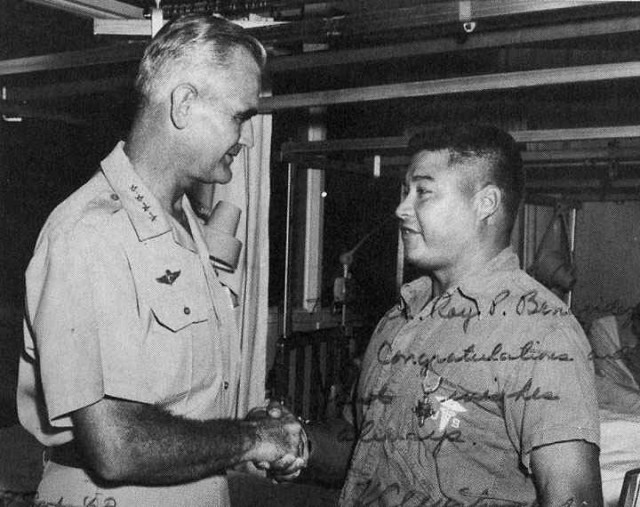
He stumbled and fell, but thought he’d only snagged himself on a thorn bush. So he kept running till a grenade blast slammed him to the ground, peppering his face with shrapnel. Incredibly, he got up again and staggered his way toward the circle of men that had split up into two groups.
Four were dead, so he got an AK off of one and redistributed their ammo among the rest. Ignoring enemy fire, he bound what wounds he could and injected morphine into those who were screaming the loudest.
Picking up his radio, he directed air strikes into the enemy, then directed another chopper toward his group. He was still asking for more air support when a second bullet got him in the right thigh.
The chopper landed, allowing Benavidez to drag the dead and wounded into it. But the enemy kept up their barrage, so he waved the chopper toward the second group as he tried to provide cover fire from the ground.
Benavidez spotted Wright near the second group. The man was dead, so he bent down to get the pouch containing their radio codes and call signs. He was stuffing them into his shirt when the third bullet hit him in the stomach. Then a grenade blasted him from behind. Then the pilot got shot and died, so naturally, the chopper crashed.
Staggering forward, Benavidez dragged the wounded out, and the group fought off the NVA as best they could when the extra air support finally reached them. Jets and helicopter gunships pounded the enemy, but they were so many of them to keep them at bay.
Benavidez was hit several more times, yet he still managed to direct the airstrikes, using his sense of hearing since he was blinded from all the blood streaming into his eyes. Then silence. The pilots thought he died, but a minute later, he was back on, directing even more strikes. He kept passing out from shock and blood loss, apparently, but never for long.
A chopper finally landed for his group, but as he was shoving Mousseau aboard, an NVA rose up and clubbed him on the head with a rifle. Benavidez fell, rolled and tried to get up, just in time to see a bayonet heading his way.
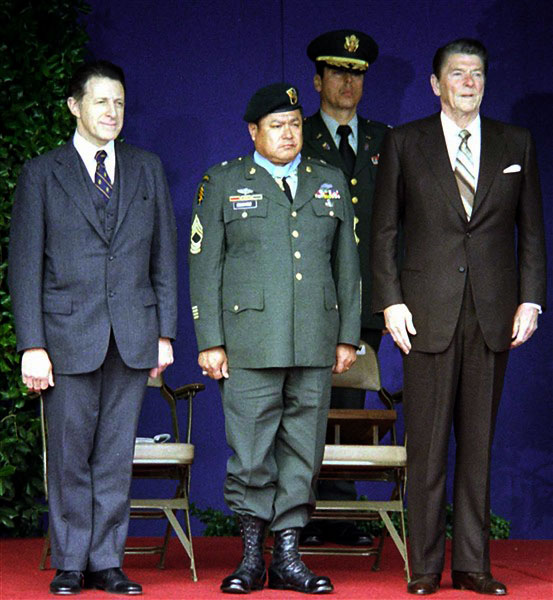
He grabbed it, cutting his right hand open, but he pulled anyway. The Vietnamese fell forward, bayonetting the Mexican-Yaqui all the way through his left arm… just as Benavidez’s knife dug deep into enemy flesh.
Getting up, he dragged Mousseau in but saw two more NVA coming toward them. Grabbing an AK-47, he dealt with those two, then dove back into the circle to rescue a Montagnard. Only then did he get onboard to be whisked away.
En route to base, Benavidez tried to hold his intestines in, but that proved too much. He passed out. He woke up in the Medevac Hospital in an open body bag while a doctor pronounced him dead. Too exhausted to talk, but not wanting to be chucked into a freezer, Benavidez did the only thing he was able to do, he spat in the man’s face.
They wanted to give him a Congressional Medal of Honor, but weren’t sure he’d survive that long, so they settled on a Distinguished Service Cross, instead. That way, they could give it to living person.
Benavidez, however, was clearly not an easy man to kill. Realizing this, they put in the paperwork for the Medal of Honor. He finally got it on 24 February 1981.
Citation:
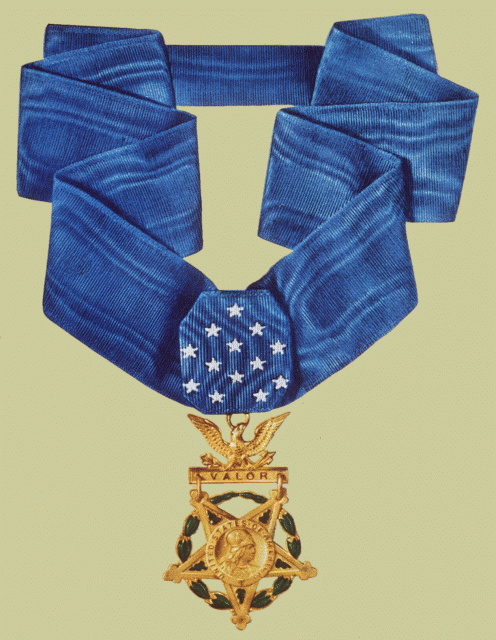
Master Sergeant (then Staff Sergeant) Roy P. BENAVIDEZ United States Army, distinguished himself by a series of daring and extremely valorous actions on 2 May 1968 while assigned to Detachment B56, 5th Special Forces Group (Airborne), 1st Special Forces, Republic of Vietnam.
On the morning of 2 May 1968, a 12-man Special Forces Reconnaissance Team was inserted by helicopters of the 240th Assault Helicopter Company in a dense jungle area west of Loc Ninh, Vietnam to gather intelligence information about confirmed large-scale enemy activity. This area was controlled and routinely patrolled by the North Vietnamese Army. After a short period of time on the ground, the team met heavy enemy resistance, and requested emergency extraction. Three helicopters attempted extraction, but were unable to land due to intense enemy small arms and anti-aircraft fire.
Sergeant BENAVIDEZ was at the Forward Operating Base in Loc Ninh monitoring the operation by radio when these helicopters, of the 240th Assault Helicopter Company, returned to off-load wounded crew members and to assess aircraft damage. Sergeant Benavidez voluntarily boarded a returning aircraft to assist in another extraction attempt. Realizing that all the team members were either dead or wounded and unable to move to the pickup zone, he directed the aircraft to a nearby clearing where he jumped from the hovering helicopter, and ran approximately 75 meters under withering small arms fire to the crippled team.
Prior to reaching the team’s position he was wounded in his right leg, face, and head.
Despite these painful injuries, he took charge, repositioning the team members and directing their fire to facilitate the landing of an extraction aircraft, and the loading of wounded and dead team members. He then threw smoke canisters to direct the aircraft to the team’s position. Despite his severe wounds and under intense enemy fire, he carried and dragged half of the wounded team members to the awaiting aircraft. He then provided protective fire by running alongside the aircraft as it moved to pick up the remaining team members. As the enemy’s fire intensified, he hurried to recover the body and classified documents on the dead team leader.
When he reached the leader’s body, Sergeant BENAVIDEZ was severely wounded by small arms fire in the abdomen and grenade fragments in his back. At nearly the same moment, the aircraft pilot was mortally wounded, and his helicopter crashed. Although in extremely critical condition due to his multiple wounds, Sergeant Benavidez secured the classified documents and made his way back to the wreckage, where he aided the wounded out of the overturned aircraft, and gathered the stunned survivors into a defensive perimeter. Under increasing enemy automatic weapons and grenade fire, he moved around the perimeter distributing water and ammunition to his weary men, reinstilling in them a will to live and fight. Facing a buildup of enemy opposition with a beleaguered team, Sergeant BENAVIDEZ mustered his strength, began calling in tactical air strikes and directed the fire from supporting gunships to suppress the enemy’s fire and so permit another extraction attempt.
He was wounded again in his thigh by small arms fire while administering first aid to a wounded team member just before another extraction helicopter was able to land. His indomitable spirit kept him going as he began to ferry his comrades to the craft. On his second trip with the wounded, he was clubbed from behind by an enemy soldier. In the ensuing hand-to-hand combat, he sustained additional wounds to his head and arms before killing his adversary. He then continued under devastating fire to carry the wounded to the helicopter. Upon reaching the aircraft, he spotted and killed two enemy soldiers who were rushing the craft from an angle that prevented the aircraft door gunner from firing upon them. With little strength remaining, he made one last trip to the perimeter to ensure that all classified material had been collected or destroyed, and to bring in the remaining wounded.
Only then, in extremely serious condition from numerous wounds and loss of blood, did he allow himself to be pulled into the extraction aircraft, Sergeant BENAVIDEZS’ gallant choice to join voluntarily his comrades who were in critical straits, to expose himself constantly to withering enemy fire, and his refusal to be stopped despite numerous severe wounds, saved the lives of at least eight men.
His fearless personal leadership, tenacious devotion to duty, and extremely valorous actions in the face of overwhelming odds were in keeping with the highest traditions of the military service, and reflect the utmost credit on him and the United States Army.
Lead image by Horst Faas
